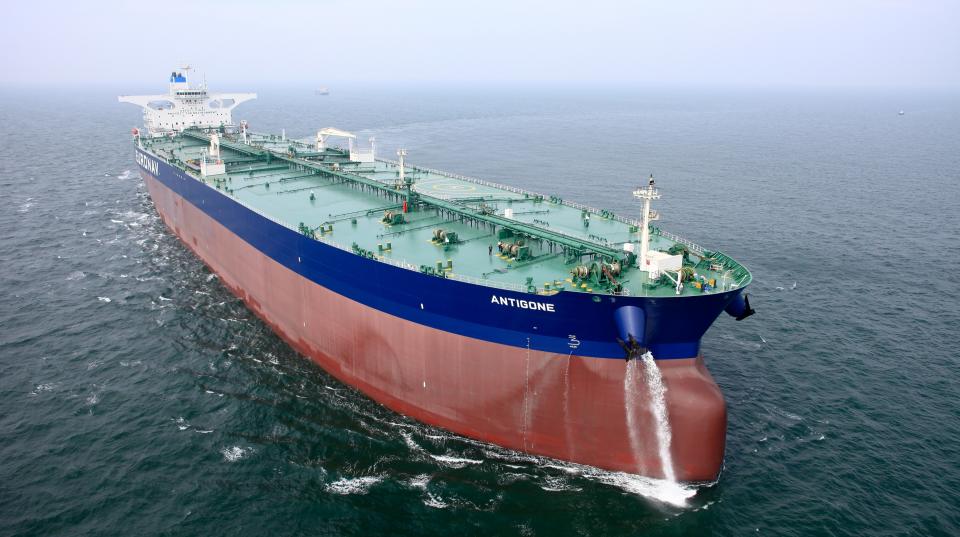Tanker shipping’s ‘odd couple’ prepares for a divorce

Current ownership of Euronav (NYSE: EURN), one of the world’s largest tanker shipping companies, calls to mind a marriage of convenience doomed to fail from the day of the nuptials.
On one hand, there’s shipping tycoon John Fredriksen and his company Frontline (NYSE: FRO), with a combined 26% stake in Euronav and a focus on building scale in the tanker space. On the other is the Saverys family’s CMB, owning 23% and intent on diversifying Euronav into other shipping segments and developing decarbonization technology.
Former Euronav CEO Hugo De Stoop attempted to serve as de facto marriage counselor to this odd couple until he resigned in May. The situation has since devolved into “a strategic and structural deadlock,” Euronav said Thursday, disclosing that divorce papers are now being written up.
“The discussions are well advanced,” confirmed Frontline in a separate statement.
Another shipowner heads for Wall Street exit
CMB plans to pay $18.43 per share to acquire the Euronav stakes owned by Frontline and Fredriksen, “followed by a mandatory public offer at the same price” to all other minority Euronav shareholders.
Jefferies analyst Omar Nokta expects Euronav would “eventually be taken private, assuming the minorities do not hold out.”
According to Stifel analyst Ben Nolan, “While there are more steps from here to being taken private, we think at this stage the odds are north of 75%.”
If so, Euronav would join a growing list of mostly large-cap shipowners that have exited Wall Street, following previous departures by Atlas (Seaspan), GasLog Partners, GasLog Ltd., Hoegh LNG Partners, Teekay LNG, Teekay Offshore and Seacor.
Frontline poised to buy 24 Euronav VLCCs
Nokta expects Fredriksen’s privately owned Euronav shares to be sold to Frontline, with aggregate Euronav share-sale proceeds of around $1 billion flowing to the public tanker company.
Frontline said it would use Euronav share-sale proceeds, together with long-term debt, to fund the purchase of 24 very large crude carriers (VLCCs) from Euronav for $2.35 billion, an average of $98 million per VLCC.
The deal would be transformative to Frontline’s fleet, making the company by far the largest publicly traded tanker owner.
According to Pareto Securities Head of Research Eirik Haavaldsen, “Frontline is raising the stakes — and risks — sharply here, and will completely dwarf all publicly listed tanker competition. With Euronav gone from the stock exchanges, [trading] liquidity in Frontline shares will gain further pace — and pave the way for further NAV [net asset value] premiums.”
Frontline’s fleet capacity would surge by 58% to 19.7 million deadweight tons (DWT) from 12.5 million DWT currently. It would have 46 VLCCs, each with capacity of around 300,000 DWT; 25 Suezmaxes with capacity of around 157,000 DWT; and 18 LR2s/Aframaxes with capacity of 110,000 DWT (these vessels can carry either crude, as Aframaxes, or refined products, as LR2s).
Euronav’s shares spiked up 17% on Thursday following news of the proposed offer price. Trading volume was extremely heavy, at over nine times the average. Frontline’s shares rose 8% in over triple average volume.
Only 2 new VLCCs in 2024-2025
VLCCs transport crude oil on high-volume, long-haul trades such as the Middle East-to-Asia and U.S. Gulf-to-Asia routes. Frontline’s exposure to the VLCC segment would more than double if the agreement is finalized.
Its timing couldn’t be better from a vessel supply perspective.
Evercore ISI analyst Jon Chappell said in a research note on Monday: “The on-the-water VLCC fleet currently totals 906 vessels, yet the delivery schedule for 2024 calls for just one new ship to be added to the fleet, with the present 2025 schedule totaling one new ship as well.
“What does history suggest about the impact on rates from fleet growth of under 1% — 0.1% to be exact — in consecutive years? It doesn’t offer any insight at all because there has never been such a de minimis number of new deliveries to a major asset class over a two-year period. However, history does show that in prior periods of limited new capacity adds, tanker spot rates typically move higher.
“Given the record-low outlook for incremental capacity in the coming years, spot rates should at worst have an elevated floor and at best have a launch pad to persistent strength.
“Demand is far more elastic than supply and clearly there are risks on that front, not the least of which is a potential pending recession. But the tanker market has already taken the largest demand gut punch, in the form of nearly unprecedented OPEC+ production cuts, and is still producing cash flow-generative rates.
“Barring a demand collapse, diminishing inventories and high oil prices will eventually require the taps to be reopened, and when that happens, there won’t be many new ships to transport those cargoes. That set-up is good for VLCC utilization and very good for VLCC spot rates,” said Chappell.
Click for more articles by Greg Miller
Related articles:
Tanker shipping consolidation saga watched ‘like it’s Netflix’
Tanker shipping takes another hit from Saudi, Russian crude cuts
How have shipping shares performed versus broader stock market?
New way to place your bets on boom and bust of shipping cycle
How push to decarbonize shipping slowed tanker building to a trickle
The post Tanker shipping’s ‘odd couple’ prepares for a divorce appeared first on FreightWaves.
